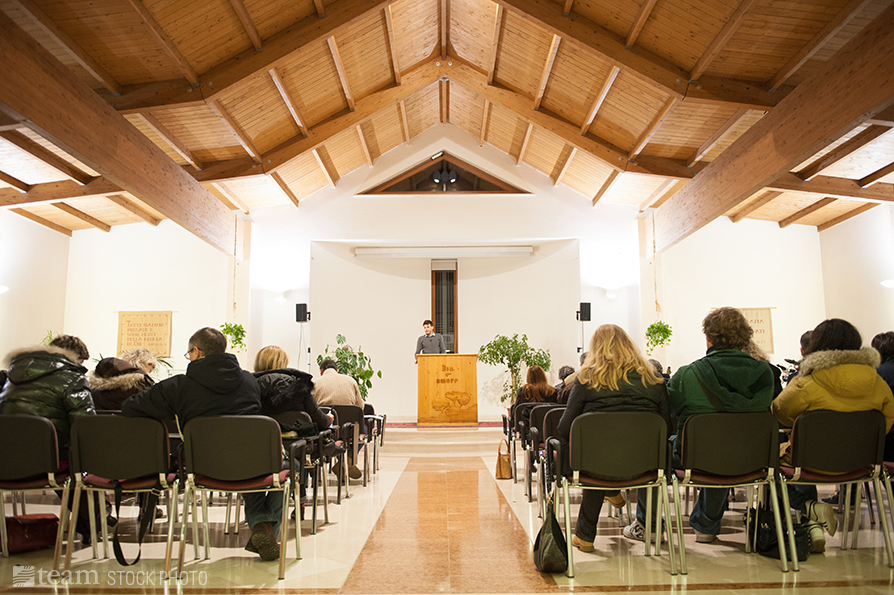
Sending Churches
What Does it Mean to be Sent?
February 22, 2016
by Zach Bradley

This post is the first in a three-part series exploring the role of the sending church in missions. Skip ahead to Part II or Part III here. The following is an excerpt from The Sending Church Defined, written by Upstream Collective. It can be downloaded as a free e-book or purchased in print.
Nothing Moves Without Being Sent
What makes you go? Not in the “Go, therefore” or “Daddy, I gotta go!” sense, but just at the most basic level. Go. Move. Do something. Your brain sends signals to your body and it stands. Pretty simple, you know, except for the dozens of muscles and bones it takes working perfectly together, not to mention 60,000 miles of blood vessels escorting millions of cells to the right places just so you can be on your feet.
If that’s not mind-blowing enough…what moves the brain in the first place?
Why start a missions article with science? Well, thanks to CBS’s “The Big Bang Theory,” geeking is hip. And it reflects perhaps humanity’s biggest question: what started all this movement? Some say it was a bang. Others look to an old idea referred to as the cosmological argument.
It says basically that nothing moves without first being caused to go. If we traced every movement in the history of the world back, there would have to be something that began the action, a “prime mover.” From its first words the Bible points out that this prime mover is God.
In the beginning, God created the heavens and the earth. The earth was without form and void, and darkness was over the face of the deep. And the Spirit of God was hovering over the face of the waters. And God said, “Let there be light,” and there was light. (Genesis 1:1-3, ESV)
God is a Sender
In the beginning, there’s just God. No heavens nor earth. No people. No ‘once upon a time’. Only the Triune God being God for eternity past—which honestly makes my brain hurt. We don’t know much about what that looked like, but Jesus gives us a hint in his prayer to the Father from John 17:
Father, I want those you have given me to be with me where I am, and to see my glory, the glory you have given me because you loved me before the creation of the world.[footnote]John 17:24, NIV [/footnote]
The Father, Son, and Spirit expressed glory and love in perfect union. It was an exchange that came straight from the heart of who he is. This is crucial to understanding God not as One who needed to create something, but as One who had it all within himself.[footnote] Michael Reeves, Delighting in the Trinity: An Introduction to Christian Faith (Downers Grove, IL: IVP, 2012), 19-20. [/footnote]
From that setting he makes the story as we know it go. How does he do it? The same old expression, this time extended outside himself. He emanates. He initiates. In a sense, he sends.
He sends his Spirit to hover over the waters, ready for a word to bring it all to life through the Son. Like so many things in Genesis 1-2, this sets a pattern for how God will keep his story rolling. As a poetic commentary celebrating God’s rule over creation, Psalm 104:29-30 describes the crazy way that everything waits on him to move:
When you hide your face, they are dismayed; when you take away their breath, they die and return to their dust. When you send forth your Spirit, they are created, and you renew the face of the earth.
God Sends Us
Not simply creating a man and woman, God commissions, or sends, Adam and Eve into the Garden of Eden to “fill the earth and subdue it and have dominion over [it]” (Genesis 1:28). Forget peasants, says T. Desmond Alexander, these guys entered the story as royalty, “God’s viceroys [who] govern the earth on his behalf.”[footnote]T. Desmond Alexander, From Eden to the New Jerusalem: An Introduction to Biblical Theology (Grand Rapids, MI: Kregel Academic, 2009), 76. [/footnote] So it makes sense that the imago Dei, [footnote] Imago Dei is a Latin phrase that means “image of God”[/footnote] the basic way that people mirror God, makes for little sent ones.
And this is not just God’s ideal; even after sin corrupts the world he continues to send his Spirit, word, angels, law, messengers, judges, priests, kings, and prophets—not to mention his own Son. Paul writes,
But when the fullness of time had come, God sent forth his Son, born of a woman, born under the law, to redeem those who were under the law, so that we might receive adoption as sons, Galatians 4:5
So it should be no surprise when the Son looks to his own and says, “As the Father has sent me, even so I am sending you” (John 20:21). The information age certainly has its privileges, namely the common knowledge of what many died longing to see— how the missio Dei5 actually works.
The Sender sends the Sent One who sends the Spirit (Acts 13:4) who sends the apostles (note the Greek, apostolos, meaning “sent one”) who start a chain reaction of sent-ones. The sending only returns to its original form when you track to the end of the story, where you will find not a garden of two, but a city of countless.
There the eternal glory and love of the Triune God will no longer be extended outside himself because the people of God will be hidden in Christ as “his body, the fullness of him who fills all in all” (Ephesians 1:23). The mission will be complete. New Testament scholar Andreas J. Kostenberger sums it up better than I could:
We have understood the notion of ‘mission’ as intimately bound up with God’s saving plan that moves from creation to new creation, and as framing the entire story of Scripture. It has to do with God’s salvation reaching to the ends of the earth: that is, his gracious movement in his Son, the Lord Jesus Christ, to rescue a desperately needy world that is in rebellion against him and stands under his righteous judgment. Clearly the notion of ‘sending’ is central to any treatment of mission. The Lord of the Scriptures is a missionary God who reaches out to the lost, and sends his servants, and particularly his beloved Son, to achieve his gracious purposes of salvation.[footnote] Andreas J. Kostenberger, Salvation to the Ends of the Earth: A Biblical Theology of Mission (Downers Grove, IL: IVP Academic, 2001), 268-269. [/footnote]
God, out of the overflow of his character, is a Sender. We then, by nature, are sent. The imago Dei makes it pulse in our veins. The missio Dei moves us to get on our feet and go. So that’s why we go. We’re sent.
Related articles

